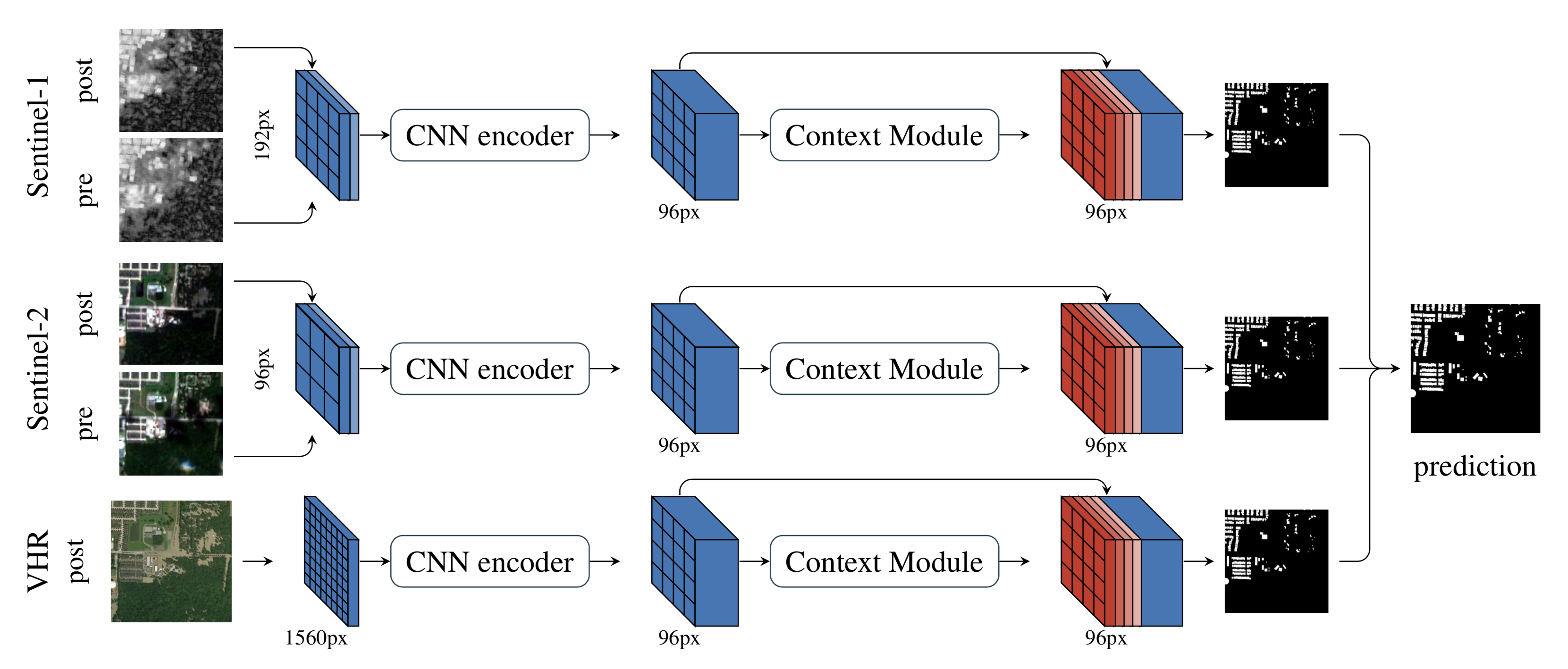This repository contains source code and data used in
Rudner, T. G. J.; Rußwurm, M.; Fil, J.; Pelich, R.; Bischke, B.; Kopačková, V.; Biliński, P. Segmenting Flooded Buildings via Fusion of Multiresolution, Multisensor, and Multitemporal Satellite Imagery. In AAAI 2019.
Abstract: We propose a novel approach for rapid segmentation of flooded buildings by fusing multiresolution, multisensor, and multitemporal satellite imagery in a convolutional neural network. Our model significantly expedites the generation of satellite imagery-based flood maps, crucial for first responders and local authorities in the early stages of flood events. By incorporating multitemporal satellite imagery, our model allows for rapid and accurate post-disaster damage assessment and can be used by governments to better coordinate medium- and long-term financial assistance programs for affected areas. The network consists of multiple streams of encoder-decoder architectures that extract spatiotemporal information from medium-resolution images and spatial information from high-resolution images before fusing the resulting representations into a single medium-resolution segmentation map of flooded buildings. We compare our model to state-of-the-art methods for building footprint segmentation as well as to alternative fusion approaches for the segmentation of flooded buildings and find that our model performs best on both tasks. We also demonstrate that our model produces highly accurate segmentation maps of flooded buildings using only publicly available medium-resolution data instead of significantly more detailed but sparsely available very high-resolution data.
bash download_data.shinstall depenencies in a new conda environment named multi3net
conda create -n multi3net pip
conda install pytorch torchvision -c pytorch
pip install opencv-python numpy mkl-random pandas rasterio matplotlib
train
cd src
python train.py -x vhrs1s2 -b 1
optional
pip install visdomstart visdom server in another terminal (e.g., using tmux or screen)
The visdom server provides additional visual information while training
visdomrun tests
export TRAINDATA_PATH=$PWD/data/east
export VALIDATA_PATH=$PWD/data/east
cd src
python unittests.pyThe docker image is based on one Pytorch container of the Nvidia Container registry
Register at ngc.nvidia.com, create api key and log in via:
docker login nvcr.ioBuild docker image
cd src
docker build -t multi3net .nvidia-docker run \
-v $PWD/data/east:/data/train \
-v $PWD/data/west:/data/valid \
multi3net \
python unittests.py